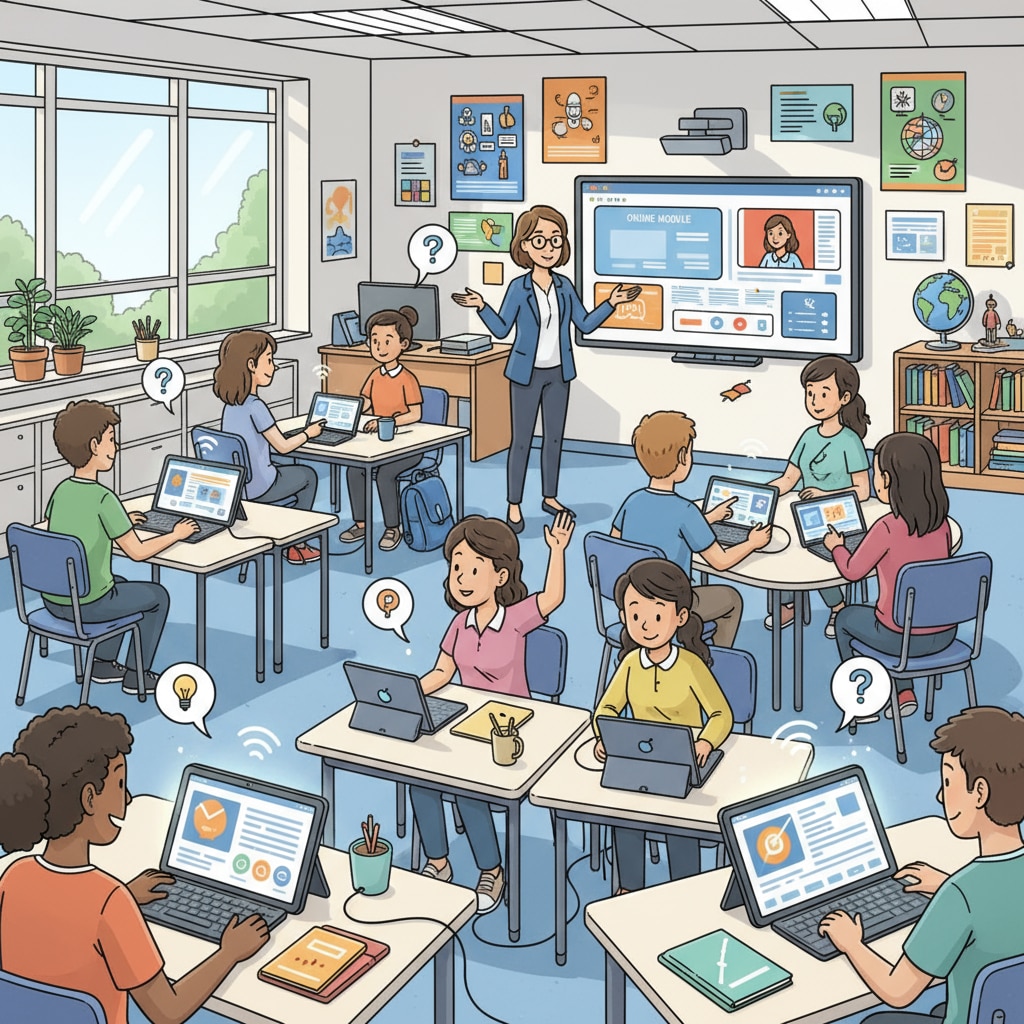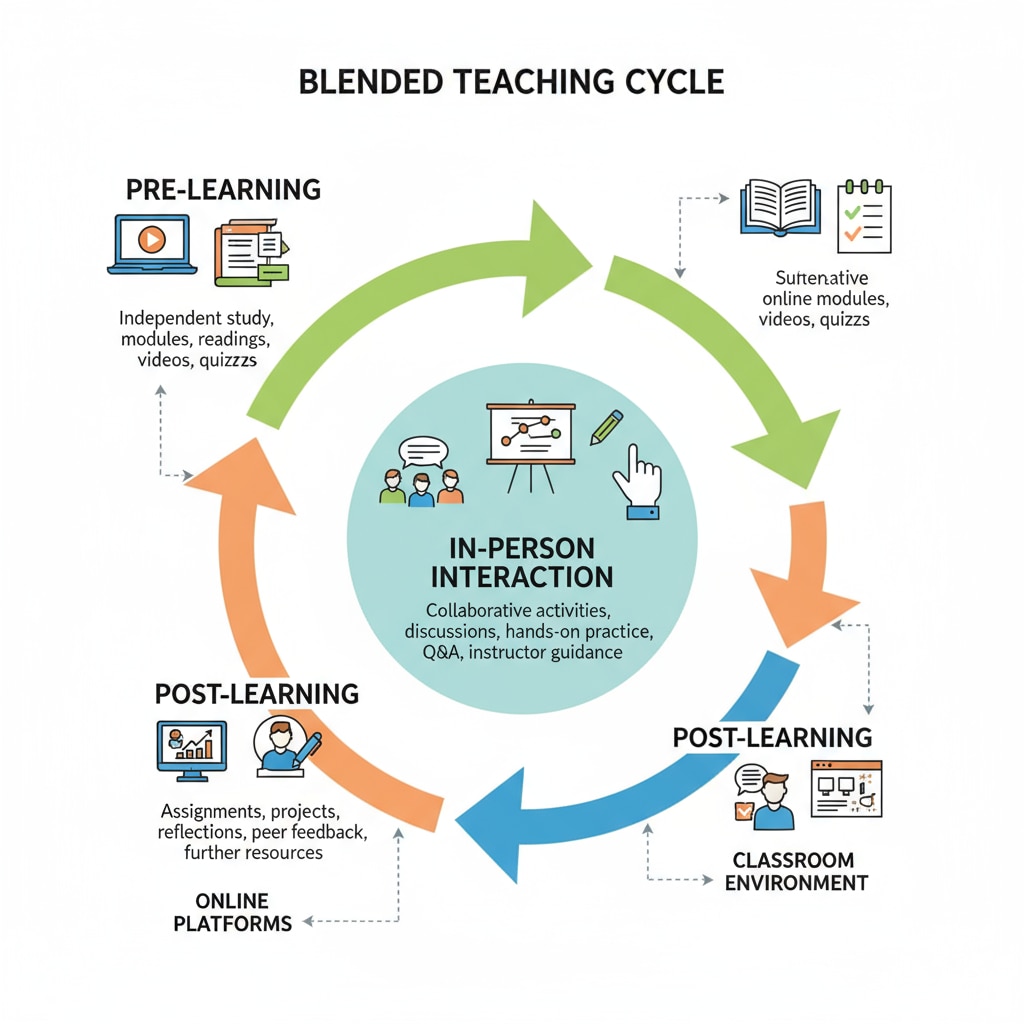The blended teaching cycle theory, along with transmission and facilitation teaching methods and educational models, has revolutionized K12 education. In today’s rapidly evolving educational landscape, this theory offers a fresh perspective on how to combine traditional and innovative teaching approaches.

The Framework of Blended Teaching Cycle Theory
The blended teaching cycle theory consists of several key components. It typically involves a cyclic process that combines in-person and online learning experiences. For example, students may start with online pre-learning modules to acquire basic knowledge. Then, they move on to in-person classroom discussions and hands-on activities to deepen their understanding. This back-and-forth cycle helps students better absorb and apply knowledge. As a result, educators can design more comprehensive learning experiences that cater to different learning styles.

Theoretical Basis of Blended Teaching
The theoretical basis of blended teaching draws from multiple educational theories. It combines behaviorist, constructivist, and social learning theories. The transmission teaching method, rooted in behaviorist principles, focuses on the direct transfer of knowledge from teacher to student. On the other hand, the facilitation teaching method, inspired by constructivist and social learning theories, encourages students to actively construct their own knowledge through interactions and exploration. This combination provides a solid foundation for the effectiveness of the blended teaching cycle theory.
The application value of the blended teaching cycle theory is significant. It offers flexibility in learning, allowing students to learn at their own pace and in their preferred environments. In addition, it promotes active learning through collaborative activities and discussions. Moreover, it enables educators to use a variety of teaching resources, enhancing the overall quality of education. However, like any educational model, it also has its limitations, such as potential technological challenges and the need for careful planning to ensure seamless integration of different teaching methods. Blended learning on Wikipedia Theories of learning on Educational Psychology website
Readability guidance: The key points include understanding the framework, theoretical basis, and application value of the blended teaching cycle theory. The combination of different teaching methods and learning theories enriches the educational experience. Despite limitations, it holds great promise for K12 education.


